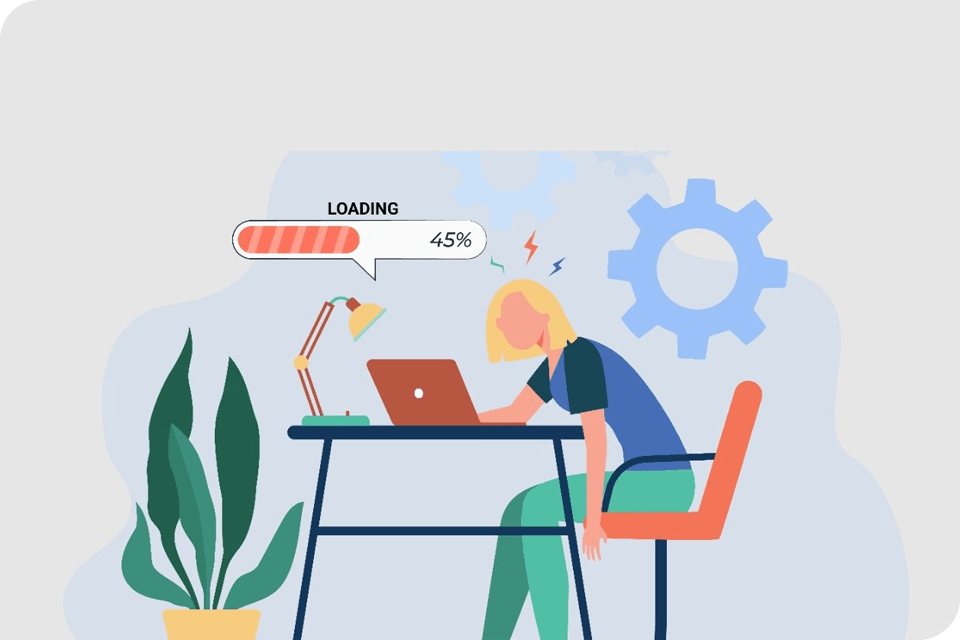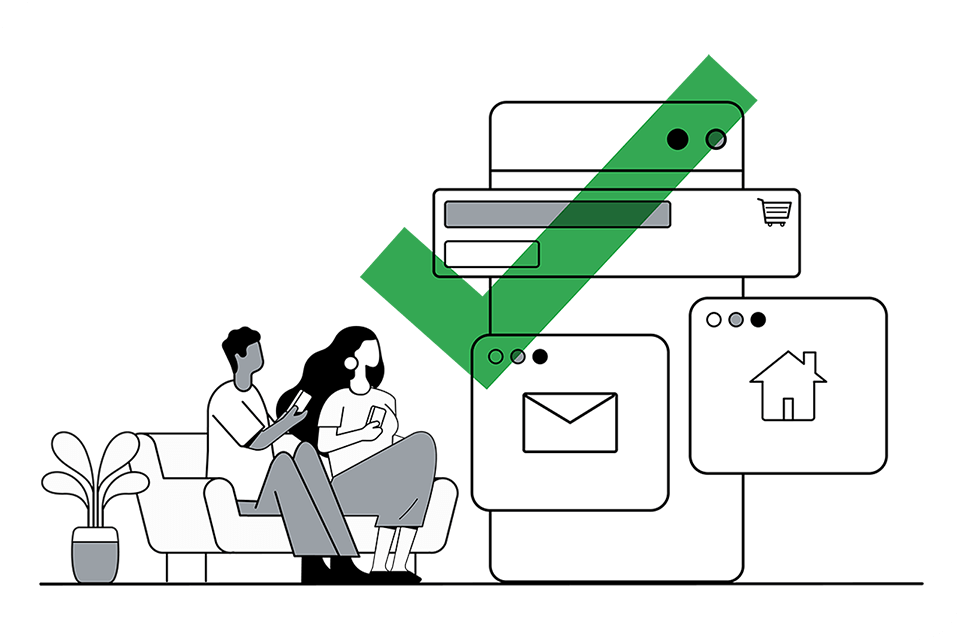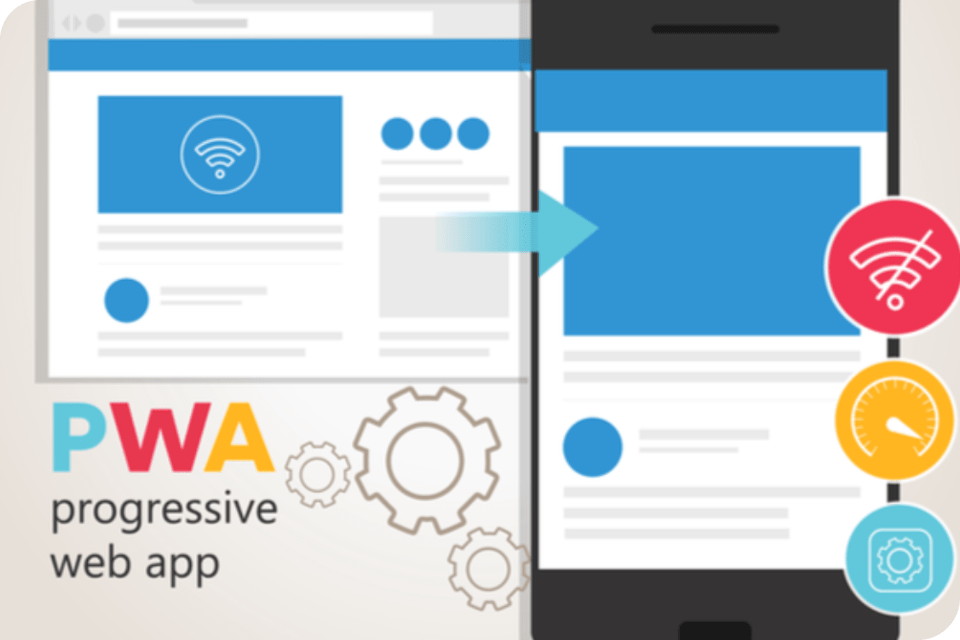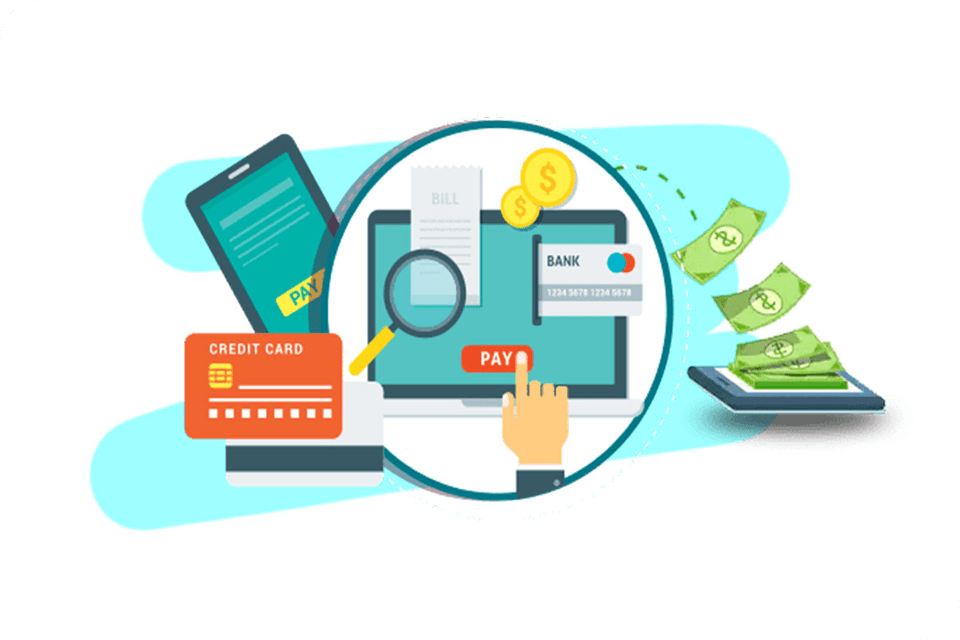A slow website means there is a very fat chance of the user losing interest in your product/service even before seeing it. The longer they have to wait the lesser the chance that any user would stick around for the website to load…
A slow website just makes any user loses interest when they first visit the website. Slow loading prompts the user to look for other competitors having a better performing website even though with a low-quality product A slow loading e-commerce website decreases sales drastically for the business.
A survey was conducted asking user experiences while visiting various websites and the result was as follows:

You might have heard that age-old adage which says “slow and steady wins the race”, but when it comes to the performance of your website, that certainly is a recipe for failure.
Why Website Speed Matters?
Apart from the fact that today’s consumer is arguably the most impatient of all time, you must understand that no one enjoys a slow website. Nonetheless, there are a few key reasons why website speed is important
We all have heard the old adage “the first impression is the last impression”. When a user visits your website for the first time, they will undoubtedly form an opinion about you, your website’s content, and your business. It is important that you do not make an error here that if the website is too slow or difficult to access, that customer will never come back
Never forget – website speed is important for good user experience. If your website speed is pathetic, your conversion rates are likely to be the same. On average, if your website takes longer than 3 seconds to load, approximately 40% of your visits will abandon your site. What does this mean? This means a slow website will drive customers away. This, in essence, destroys the entire purpose of having a website. Do a speed check and make sure you don’t lose 40% of your audience just because you didn’t focus on speed.
What’s Slowing Down Your Website?
There are various factors that can be causing your website slow in loading. We’ll see in this article some very common problem we normally never notice but their impact is significantly the most and the possible solution to solve that Specific problem as well.
- Hosting Problems
- UI/UX Problems
- Content
- Technology Used.
How to Solve these Issues?
Hosting Problems
Hosting is a major problem a website can face. It’s very important for a website and its loading speed that we use proper paid hosting along with certificates which make user experience much better than before.
There are three possible types of hosting:
- Shared hosting
- Virtual Private Servers (VPS) hosting
- Dedicated server
The most popular type of hosting that is used all over the world is shared hosting. That’s the cheapest way to get your site online in a short time and for a low fee. It’s essential to choose the fast web host to ensure better optimization. With shared hosting, you share CPU, disk space, and RAM with other sites that also use this server. This is the main reason why shared hosting isn’t as fast as VPS or a dedicated server.
Virtual Private Servers and dedicated servers are much faster. VPS uses multiple servers for content distribution. Having VPS you share the server with its other users and have your own part of the virtual server where your configurations don’t influence other clients. If your website has the average traffic or you have the eCommerce site with traffic spikes in some periods, VPS will be the optimal solution for you.
The most expensive hosting option is to use a dedicated server which can be your own physical server. In this case, you pay a server rent and hire a system administrator to maintain it.
Serverless architecture is yet another option that removes maintenance and server set up procedures altogether.
UI/UX Problems
Optimize the size of images on your website
Everyone loves eye-catching images. In the case of successful eCommerce sites, images are the vital part. A lot of photos, images, and graphics on your product pages improve engagement. The con of using images is that they are usually large files that slow down a website.
The best way to reduce the image size without compromising its quality is to compress images using such tools as ImageOptim, JPEGmini, or Kraken. The procedure may take a bit of time but it’s worth it. Another way to reduce the image size is to use the HTML responsive images <secret> and <size> attributes that adjust image size based on user display properties.
Minimize the number of JavaScript and CSS files
If your website contains a lot of JavaScript and CSS files, it leads to a large number of HTTP requests when your website visitors want to access particular files. These requests are treated individually by visitor’s browser and slow down the website work. If you reduce the number of JavaScript and CSS files this will undoubtedly speed up your website. Try to group all JavaScript into one and also do so with all CSS files. This will reduce the overall number of HTTP requests. There are a lot of tools to minify HTML, CSS, and JavaScript files quickly. For instance, you can use WillPeavy, Script Minifier, websiteplanet or Grunt tools.
Reduce the use of web fonts
Web fonts have become very popular in website design. Unfortunately, the use of web fonts has a negative impact on the speed of page rendering. Web fonts add extra HTTP requests to external resources. The following measures will help you reduce the size of web font traffic:
- Use modern formats WOFF2 for modern browsers;
- Include only those character sets that are used on the site;
- Choose only the needed styles
Content
Websites that are content rich offer visitors all the valuable details that are relevant to them. The content may be industry news, useful tutorials, product details or helpful market information. Good design helps your users be present on your webpage, while good content answers their doubts.
There are some Golden Rules of writing Content on website which exponentially increase Visitors interest to be on that website for long which helps website to achieve high conversion rate.
Know Your Audience
It might seem obvious, but often authors put pen to paper—or finger to keyboard—without first considering who they’re trying to reach. Before you start writing, ask yourself the following questions: Who is my main target market? What about a secondary audience that has the power to impact and educate my main audience? How will they find my website on the internet?
Write Short, Simple Sentences:
Long sentences are for Charles Dickens; today’s reader’s attention span requires sentences of 35 words or less. As a result, efficient and easy-to-read website content would inevitably attract a larger audience.
Emphasize the use of nouns and verbs. Adverbs and adjectives can be used sparingly. When terms like “equanimity” or “obfuscate” would help, use “calm” or “confuse.”
If you’re not sure what grade level you’re writing about (like most of us!), an online readability guide will help you figure it out.
Stick to Active Voice
Use active verbs rather than passive verbs, and identify the sentence’s subject. Instead of writing “A coffee was ordered,” write “”The man ordered a coffee” You can buy items on our website” instead of “Products can be purchased on our website.”
The active voice aids in the development of concise, reader-friendly sentences. It’s also more direct; when you speak directly to the audience (“You can do it”) engages the audience more than just telling “It can be done.”
Make Text Scan-able
Make sure the document is easy to skim in addition to putting the most relevant material at the top. Most web users will browse the website for the details they’re looking for, and if they can’t find it quickly, they’ll move on.
You don’t trust us? Try paying attention the next time you visit a website you’ve never visited before. Are you reading the whole text from start to finish? Is your eye bouncing around, waiting for the details you’re searching for?
Technology Used
Use a Content Delivery Network (CDN)
A content delivery network is a set of web servers distributed across various geographical locations that provide web content to end users with regard to their location. When you host the website on a single server, all users requests are sent to the same hardware. For this reason, the time needed to process each request increases. On top of that, the load time increases when users are physically far from the server. With CDN, user requests are redirected to the nearest server. As a result, the content is delivered to a user quicker and a website works faster. This is a rather expensive, but quite effective way to optimize the load time.
Reduce the number of plugins
Plugins are common components of each website. They add specific features suggested by third parties. Unfortunately, the more plugins are installed, the more resources are needed to run them. As a result, the website works slower and also security issues can appear.
Use website caching
In case there are a lot of users accessing the page at one time servers work slowly and need more time to deliver the web page to each user. Caching is the process of storing the current version of your website on the hosting and presenting this version until your website is updated. This means that the web page doesn’t render over and over again for each user. Cached web page doesn’t need to send database requests each time.
Implement Gzip Compression
Gzip Compression is an effective way to reduce the size of files. It minimizes the HTTP requests and reduces the server response time. Gzip compresses the files before sending them to the browser. On the user side, a browser unzips the files and presents the contents. This method can work with all files on your website. You can enable Gzip on your website by adding some lines of the code or via a utility called gzip.
Database optimization in CMS
Database optimization is an effective way to increase performance. If you use a content management system (CMS) packed with complex plugins, the database size increases and your website works slower. For instance, the WordPress CMS stores comments, blog posts, and other information that take up a lot of data storage. Each CMS requires its own optimization measures and also has a number of specific plugins. For WordPress, for example, you may consider WP-Optimize.
Detect 404 errors
A 404 error means that a “Page isn’t found”. This message is provided by the hosting to browsers or search engines when the accessed content of a page no longer exists. In order to detect and correct a 404 error, you can use error detection tools and plugins. As we mentioned, additional plugins can negatively affect your website speed, so we advise running the resource through external tools for error detection. For instance, Xenu’s Link Sleuth, Google Webmaster Tools (GWT), and 404 Redirected Plugin for WordPress.
Once you’ve detected all 404 errors, you need to assess the traffic that they generate. If these dead links no longer bring any visits and thus never consume your server resource, then you may leave them as they are. If these pages still have some traffic coming, consider setting redirects for external links and fixing the link addresses for the internal ones.
Reduce Redirects
Website redirects create additional HTTP requests which negatively impact performance. We advise to keep them to a minimum or eliminate them entirely. First, you should identify all redirects on you page by running a site scan. You can use Screaming Frog to quickly identify redirects. Then you must check if they serve a necessary purpose and leave only the critical ones.
Use Prefetching Techniques
Prefetching entails reading and executing instructions before a user initiates them. The technique is rather common. It works well if you can anticipate user actions and, for instance, load some content or links in advance. Usually, modern browsers allow for prefetching by default as they assume user behavior patterns. However, UX specialists and engineers are more likely to understand user behavior and make “hints” for browsers to do prefetching work.
Conclusion
Currently, a typical user expects web pages to load less than after 3 seconds. If you don’t meet this expectation, you lose a lot of website traffic and, as a result, your revenue.
So, it is recommend applying a simple yet effective website speed optimization approach:
1. Check and evaluate the key factors of website success, considering conversion, visibility, and usability.
2. Test your current website speed and prioritize the pages and features that need the most attention in regard to these three factors.
3. Start your optimization with the most speed-reducing aspects and focus on the pages that define your conversion success the most.
At Sidat we provide reliable solutions for website hosting and we ensure that complete design process is being followed. If you are looking for a reliable website hosting solution for your business, we have a variety of packages available and the option of custom packages too. Drop in your business detail here and we will surely get back to you soon.







